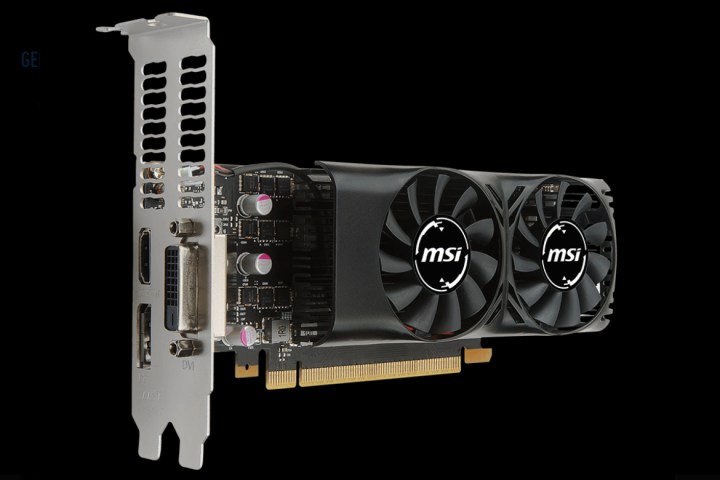
For starters, here is the GTX 1050 2GT LP:
| Core name: | GP107-300 |
| Core architecture: | Pascal |
| Process node: | 14nm FinFET |
| Base clock speed: | 1,354MHz |
| Boost clock speed: | 1,455MHz |
| Onboard memory amount: | 2GB GDDR5 |
| Memory clock speed: | 7,008MHz |
| Memory interface: | 128-bit |
| CUDA core amount: | 640 |
| Size: | 182mm x 69mm x 35mm 7.16 x 2.71 x 1.37 inches |
| Recommended power supply size: | 300 watts |
| Output: | 1x DisplayPort 1.4 1x HDMI 2.0 1x DL-DVI-D |
| Maximum resolution: | 4,320 x 2,560 |
Now here is the GTX 1050 Ti 4GT LP:
| Core name: | GP107-400 |
| Core architecture: | Pascal |
| Process node: | 14nm FinFET |
| Base clock speed: | 1,290MHz |
| Boost clock speed: | 1,392MHz |
| Onboard memory amount: | 4GB GDDR5 |
| Memory clock speed: | 7,008MHz |
| Memory interface: | 128-bit |
| CUDA core amount: | 768 |
| Size: | 182mm x 69mm x 35mm 7.16 x 2.71 x 1.37 inches |
| Recommended power supply: | 300 watts |
| Output: | 1x DisplayPort 1.4 1x HDMI 2.0 1x DL-DVI-D |
| Maximum resolution: | 4,320 x 2,560 |
Obviously, the big difference here is the number of processing cores and the amount of onboard memory. Although the 1050 Ti’s base and boost clock speeds are lower than the other card, it utilizes more cores to better handle PC games and VR content. Having more onboard memory is a big help too, offering more work space for those cores to fondle high-resolution textures and more.
As their size shows, the cards have a low-profile design to fit in a compact space despite sporting two cooling fans. They also consist of military-grade Class 4 (MIL-STD-810G) components, meaning the components are tested to endure the “torturous circumstances” generated by overclocking and PC gaming. On that note, both cards can be safely overclocked using MSI’s free Afterburner utility.
Finally, both cards consume a two-slot space inside the PC, but only connect to one PCI Express x16 3.0 slot. They’re also powered by this slot, so don’t worry about providing an additional power connection from the local PSU. On top of that, both cards support DirectX 12, OpenGL 4.5, and a maximum resolution of 7,680 x 4,320 across three connected displays.
On the pricing front, MSI hasn’t released any numbers, but expect them to be slightly higher than Nvidia’s suggested retail price. However, the other “GT” models in MSI’s GTX 1050 arsenal are the GTX 1050 2GT OC and the GTX 1050 Ti 4GT OC, costing $120 and $150, respectively, giving us a ballpark figure until MSI releases pricing information.



